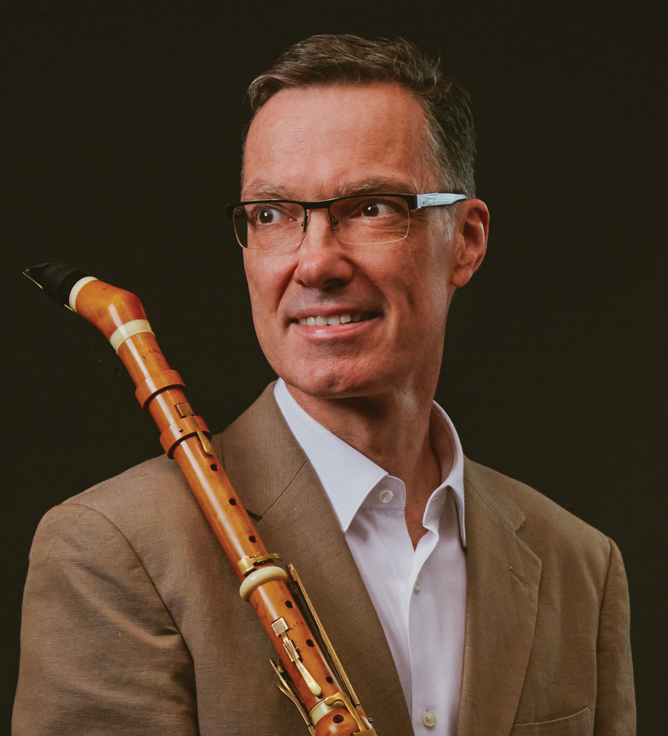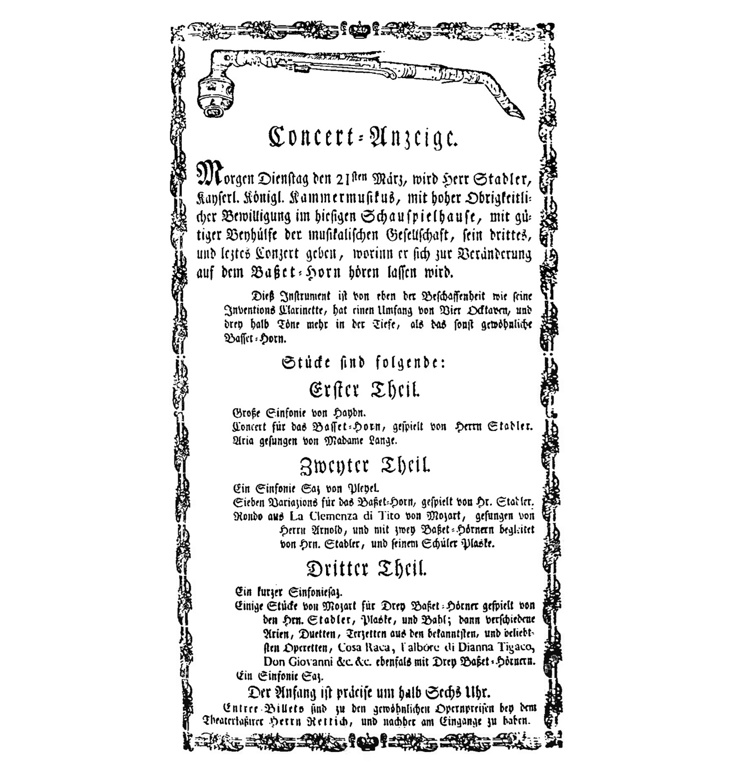Craig Hill on Mozart's Clarinet Concerto

"Mozart’s Clarinet Concerto has accompanied me over 41 years." - Craig Hill, Mozart's Clarinet Soloist
I first heard it as a wonderous 11-year-old. An Aunt had enquired at her local record store about clarinet music and they proffered “Mozart or Brahms”. And so, Mozart it was, in a World Record Club vinyl edition with Alfred Prinz and the Vienna Philharmonic. I could play it on the stereo system in the “good room”, where I would spend the afternoons after school lying on the floor, staring at the ceiling and wondering how Mozart knew what to write next? It was the longest piece of music I had ever heard, and it seemed like one endless melody from start to finish.
It remains a good question all these years later – formal analysis and appreciation of rhetoric have provided some insight, but it is still a miraculous creation. Mozart’s melodies allow different continuations which are equally natural and satisfying, allowing the music to travel seamlessly in different directions. A perfect example is the contraction of the opening tutti to form the closing postlude of the first movement: there is no sense of cut and paste, but a perfect summation, and a confirmation of the clarinet’s final statement.
But there are less formal processes at work too, which go to our subconscious mind. In one striking passage in the first movement the clarinet plays a series of four semibreves with a sparse crotchet accompaniment. The un-noticed origin of these bars (216-219, at 7:35-7:44) is just two bars earlier (bar 214 at 7:31); it is a simple cadential ending to a much more striking idea, which is now played at half speed.
…What was that last thing you just said?
I said, “I’m a basset clarinet, and I’m lost in F-sharp minor” …
The original downward sixth is elastically expanded to a diminished seventh and then contracted to a diminished fifth, while the pattern of a single bass note followed by three notes in the upper strings is preserved, at half speed. That such an almost insignificant phrase ending can be transformed is indicative of the way Mozart was developing a new kind of continuity in his music. In a way, Mozart has briefly slowed time down to half speed, and this in part explains the other-worldly quality of the music, as we are hurtled by the activity of one intervening bar into a parallel universe for just four bars, before the previous rhythmic activity is resumed.
The ensuing orchestral episode makes use of a wandering motive in the violins, which tramp up and down, chromatically looking around corners to try and find a familiar key (the passage starting at 8:02), eventually stumbling, with much joy, into D major (at 8:21). The wandering violins are accompanied by mysterious, melancholy suspensions in the bassoon, violas and cellos. On the surface this passage seems like a new invention, but it feels completely natural and is actually a half-speed variant of the gatekeeper motive first played by the clarinet and copied by the orchestra just before the “2nd group”, to revert to formal analysis (back at 3:19-3:31).

Left: A program featuring Mozart's Clarinet Concerto, concert by Anton Stadler on March 21, 1794 in Riga. Johan von Kalker: Die Geschichte der Klarinetten. Eine Dokumentation. Textilwerkstatt Oberems, 1997, S. 146.
This gatekeeper motive in the bass register naturally enough and is strikingly familiar to Mozart’s setting of the Quonium in the C minor Mass, K 427. Thou alone art holy. The clarinet enters the new section unaccompanied (at 3:31). When this music returns in the recapitulation, it is one of the most sublime moments of the concerto; the clarinet has an expansive view of the universe which extends from the highest peak to the lowest valley. We hear each register, in turn, eventually arriving at a low B, which is improbably created by the player closing a hole with their knee (starting at 10:01, the low B at 10:17).
There are many other moments in the first movement which chart the basset clarinet’s journey of the soul: wonderment – in the dominant seventh fermata which is followed by counterpoint (at 4:29), doubt – in an upwardly-inflected phrase and a short silence (bar 132 at 4:45), belief – in an Alberti accompanied depiction of the clockwork universe, with all the intricate parts moving in absolute order (bars 134-137 from 4:49), and joy – with the blossoming of harmonious melody in the violins (bars 138-140 at 4:57). The composer’s affiliation with the Freemasons is written into every bar.
ii Adagio
The question is the answer.
One of the inspiring things about the Clarinet Concerto is that the central Adagio speaks so directly to many people. It’s always in the top couple of spots in those surveys about favourite classical pieces. The material of the theme itself seems simple; AABB, each section is eight bars, the orchestra repeats the melody of the clarinet. At first, the rhetorical nature of the first phrase is not quite clear: is it a statement or a question? The repetition, starting on the same note but going higher makes things clearer. This is a question, but no answer is to be found in the following four bars.
Why? Why? I don’t know…
The B section doesn’t obviously answer the opening phrase, but the rhythm is the same as the first phrase, minus the first beat; a dotted crotchet followed by three quavers and a crotchet. Here Mozart’s new compositional method is at work, speaking to our subconscious directly; no need to go via all those codified Baroque rhetorical figures. No one really knows them anymore anyway.
iii Rondo (Allegro)
Because, just because…
The clarinet, being human, is not content with this and proceeds to enquire and investigate, eventually reaching a vision of majestic grandeur before the reprise. Even the infectiousness of the final movement is tinged by this deeper feeling. The astonishingly-rich array of themes includes a melancholic dotted melody in the minor mode over a chromatic descending fourth, alluding to the traditional use of this bass as a lament (at 1:47). After poignantly pausing midway for reflection (at 5:27) the clarinet launches into further high-spirited episodes.




